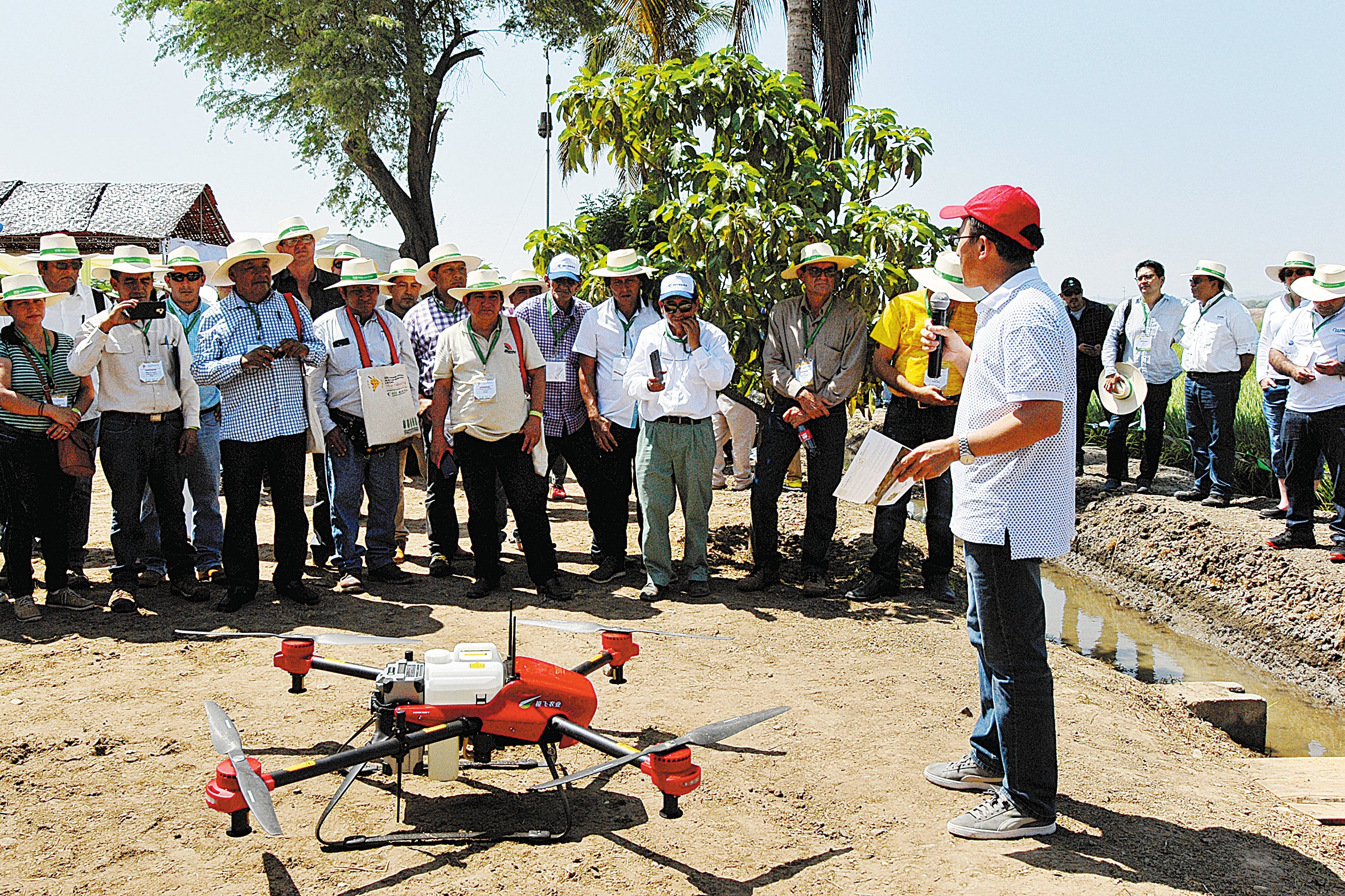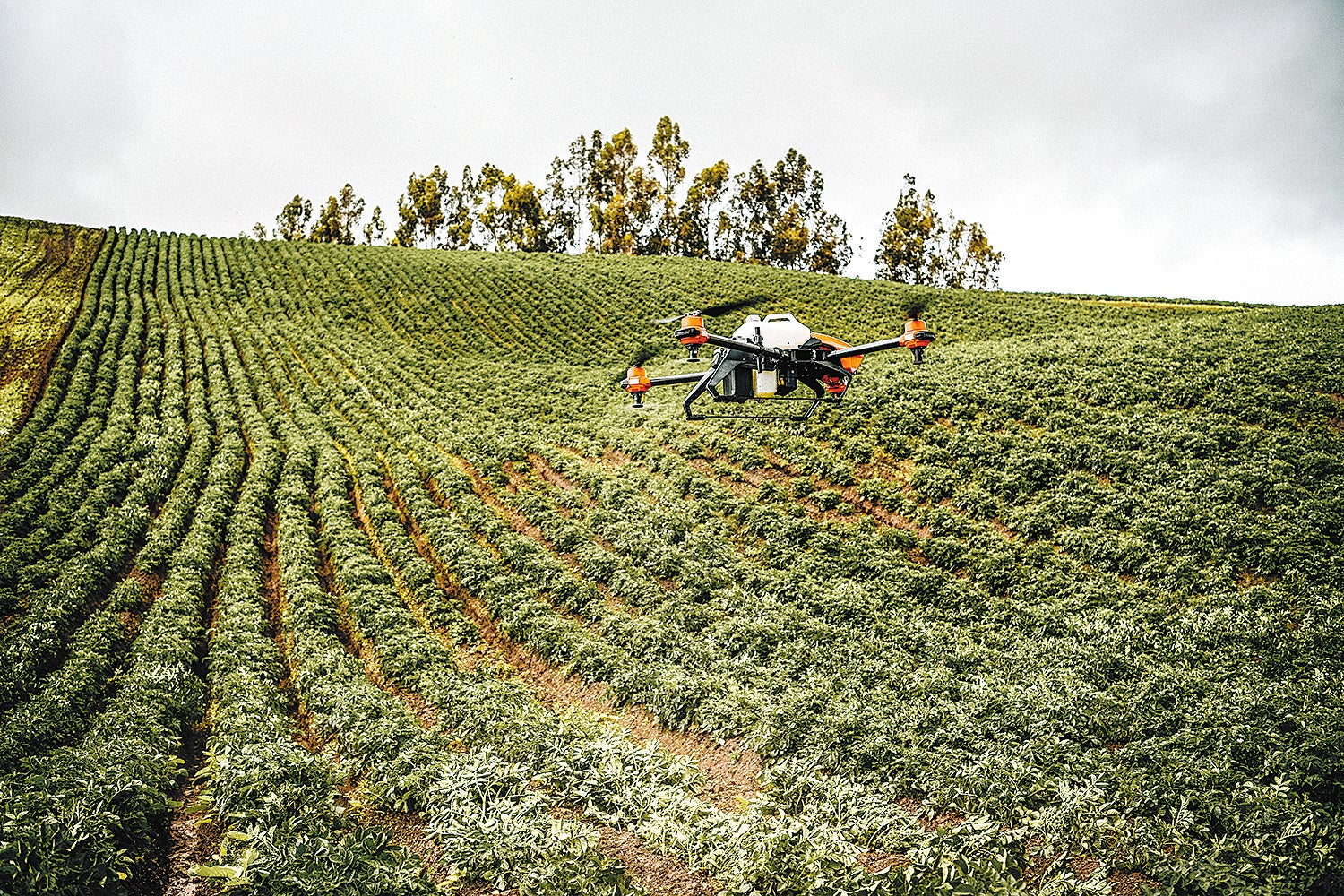For makers of farm drones, the horizons are boundless
THE ARTICLES ON THESE PAGES ARE PRODUCED BY CHINA DAILY, WHICH TAKES SOLE RESPONSIBILITY FOR THE CONTENTS

Ma Zhiqiang is introducing Chinese agricultural drones to Ecuador, known for such crops as bananas, cocoa and coffee.
Ma, who used to work as a technician for a Chinese medical equipment company, worked in Ecuador for eight months in 1982.
Attracted by the country’s picturesque and diverse landscape, he quit his job after coming home to China and returned to Ecuador to start a business.
Because of a shortage of modern agricultural equipment, most farmers in Ecuador still rely on manpower to seed, fertilise and spray pesticides on their land.
“I found that although the agricultural economy in Ecuador is developed, local farmers often face a heavy financial burden and low profit margins,” Ma said. “They are in great need of efficient and precision equipment such as drones to improve working efficiency.”
Fully automated drones are ideal for use on banana plantations, he said. Such drones have more intricate technology than traditional manual spraying and fixed-wing aircraft, allowing them to accurately control droplet size, flow rate and spray area. With a powerful downdraft, minute droplets are spread evenly on crop leaves, reducing chemical drift to safely minimise environmental contamination.
After careful research and comparison, Ma finally chose devices developed by XAG, a Chinese agricultural drone manufacturer. His company, Megadrone SA, offers drone-pilot training courses that create employment opportunities for young people in rural areas.

“Next we plan to establish a long-term collaboration mechanism with local governments and educational institutions in Ecuador to promote drone technology and equipment through schools and other institutions,” Ma said.
His company has business partners in Brazil and Chile, and potential customers have also emerged in Colombia and Argentina. He hopes to provide quality services to more customers in South America.
With the modernisation of agriculture, demand for advanced farming devices has grown significantly. According to experts, agricultural drones are widely used for sowing seeds and spraying fertilisers and pesticides, increasing the efficiency and management of plant protection and grain production.
Justin Gong, co-founder of XAG, said: “A shortage of agricultural labour has become a long-term problem for many countries, who are making stronger demands for autonomous drones and robots. We hope to bring more unmanned farming devices to overseas markets through working with local partners and distributors.”
Farmers in Brazil, Chile, Ecuador and other South American countries with complex terrain attach more importance to the flexibility and precision of spraying, and farm drones are mainly used in banana, cocoa, coffee and sugarcane plantations, Gong said.
“In the next few years we expect agricultural drones to be used on a larger scale in South-east Asia, Eastern Europe and South America.”
By last December the company’s unmanned agricultural devices had been sold in 42 countries and regions. Apart from drones, XAG has introduced farm robots in Australia, Brazil, Japan, Russia, Thailand, the United Kingdom and the United States.
In June the company’s R150 unmanned ground vehicles made their debut in Japan, pollinating an apple orchard in the city of Takayama to help alleviate a labour shortage.
Civil drones comprise consumer-level and industry-level equipment. Industry experts said growth of the civil drone market is mainly coming from consumer-level devices used for aerial photography, but the industry-level sector will end up being worth much more.
DJI, another Chinese commercial drone manufacturer, has also invested heavily in developing agricultural drones, with the aim of helping farmers improve efficiency and increase the use of intelligent agricultural equipment.
The company, based in Shenzhen, has expanded its presence internationally since 2016. Its agricultural drones have been deployed in more than 40 countries and regions, with more than 20,000 drones having been sold.
DJI has expanded relatively quickly in Japan and South Korea, accounting for 60 per cent to 70 per cent of the farm drone market in these two countries. Its agricultural products also perform well in South-east Asia and Latin America, both of which have good growth potential.
Previously published on Chinadaily.com.cn
